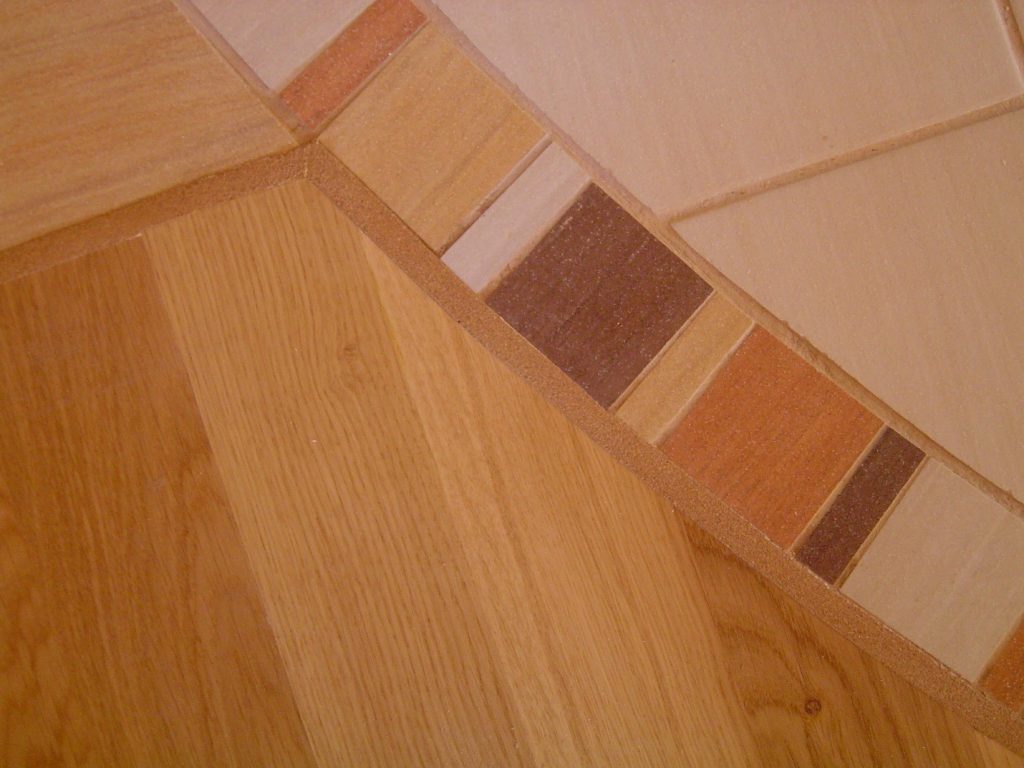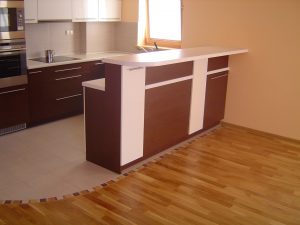
The kitchen is such a room in a house or apartment, where residents spend a large majority of their time. Therefore, many customers would like to have a wooden floor in the dining room. However, when choosing parquet as a floor for your kitchen, you need to take into account a number of features of this product.
First of all, you need to remember that the parquet is not suitable for rooms with high humidity, or for such rooms where water is often poured on the floor: kitchens, bathrooms, laundries, saunas, baths. Wood flooring is affected by water or steam. The ideal parameters for its operation are the temperature not lower than 18’C, the relative humidity in the room is 40 – 60%. In kitchens, these conditions are not met.
But, if you want to use the parquet floor in the kitchen, you need first of all to properly zone this room. In this case, determine the area of likely water ingress to the floor in the room (area near the sink, stove, surface / countertops for cooking, area under and near the dishwasher, and put moisture-proof floor coverings in such zones: ceramic tiles, natural stone, floor coverings vinyl, etc. But on the remaining area of the kitchen you can lay a parquet is made of natural wood.
The choice of the surface treatment of the parquet floor itself (lacquer or oil) as well as its color and texture is a matter of your personal preferences, as well as the creativity of the designer, if you implement a project designed personally for you by a specialist designer.
But, nevertheless, we want to give you a number of tips. Floors, finished with oil, better evaporate the moisture that has entered them, since the pores on the surface of the wood remain open. It should be remembered that in the kitchen some items fall off the table, leaving marks on the surface of the parquet. Salt, sugar, solid particles of products that can act as abrasives, scratching the surface of the parquet, fall onto the floor. On the matt surface of the floor, covered with oil, all these deformations of scratches and dents will be less noticeable than on the lacquer parquet. Also for these reasons, we advise using a parquet of variegated knotty selection and better brushed; this board will have a harder surface. Summarizing what has been written, one can single out the following characteristics:
- oil is more suitable than lacquer;

- brushed surface is better than smooth;
- a motley knotted board is better than a calm selection board.
If these recommendations are not in conflict with the concept of your interior, you will receive practical parquet floors for the kitchen, which is a long time will have a presentable appearance.
Installation.
At last, the choice of installation – gluing to the base or laying on the substrate – does not matter. The only caveat: when joining the parquet with other floor coverings in the “wet zone” when laying on a substrate – in a floating way, you will have to use a T-shaped threshold, or glue the board over the entire area – then you can avoid using the threshold, besides You will get a completely flat floor in the kitchen.
